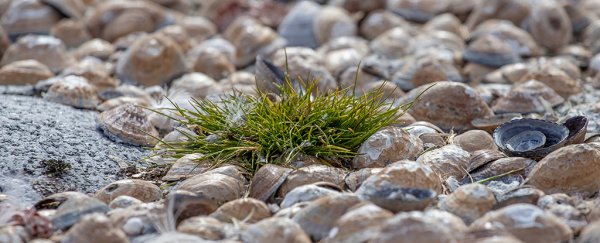Flowering plants in the Antarctic region are rapidly expanding, scientists say, indicating the continuing effects of climate change on the continent. The findings suggest we may have reached a tipping point in this fragile, remote ecosystem.
A new study of this plant expansion looked at the two flowering plants native to Antarctica, Deschampsia antarctica and Colobanthus quitensis. Researchers measured the growth and expansion of these plants on a small subantarctic island called Signy Island from 2009 to 2019.
Both plants grew faster each year as temperatures rose – which the team puts down to warming summer air and a drop in the plant-trampling fur seal population, which could be down to food availability and sea conditions.
"We hypothesize that the striking expansion of these plants is mainly triggered by summer air warming and release from the limitation of fur seal disturbance," write the researchers in their published paper.
Between 1960 and 2011, the air increased by 0.02 degrees Celsius each year, but after a four-year cold snap, it's been increasing at a rapid 0.25 degrees a year.
The growth rate of D. antarctica between 1960 and 2009 was nearly 21 percent a decade. That rate increased to 28 percent a decade from 2009 to 2018. Meanwhile, over the same periods, C. quitensis growth went from just under 7 percent a decade to 154 percent.
While all this might be good news for D. antarctica and C. quitensis, it's not going to benefit the area as a whole: The warming temperatures may give invasive species a foothold in the ecosystem, one that could cause "irreversible biodiversity loss and changes to these fragile and unique ecosystems," the authors write.
The same sort of plan expansion has been recorded on the mountains of Europe, but this study shows "the first evidence in Antarctica for accelerated ecosystem responses to climate warming," the authors note. It turns out that Antarctica might not be as resistant to the climate crisis as we thought.
"This hypothesis is compatible with observations in the Northern Hemisphere, in particular in Europe, where land use change correlates with vegetation change but, as here, the primary driver of these responses was climate warming," write the researchers.
The researchers suggest what's happening on Signy Island is likely to be occurring elsewhere, although further studies will be required to know for sure. More research is also needed about the possible future impacts of the spread.
With so many factors in play, from plant expansion to seasonal rainfall to ice melt, it's a challenge to predict precisely where Antarctica is heading – but it's clear that this is a very delicately balanced environment and one which is under severe threat.
"Our findings support the hypothesis that future warming will trigger significant changes in these fragile Antarctic ecosystems," write the researchers.
The research has been published in Current Biology.
